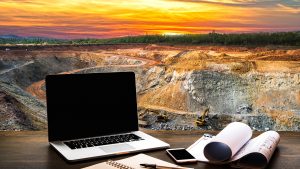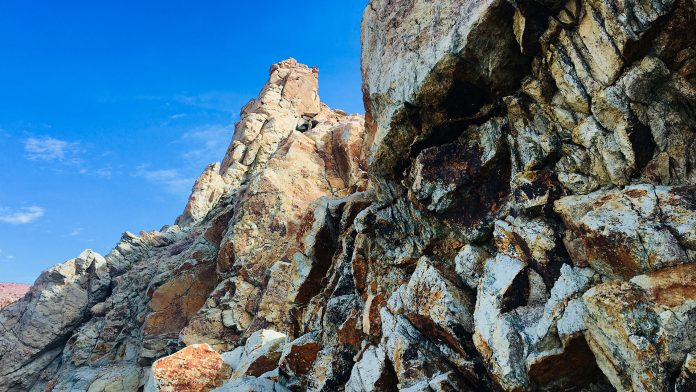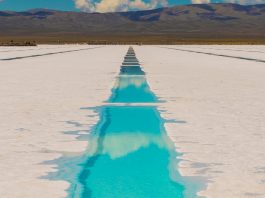Deep South Resources is back to upgrading its copper exploration game in Southern Africa.
Deep South Resources, a Canadian mining exploration company working in Africa, has concluded a long legal battle and is now continuing its work and planning for the future. The company specialises in copper exploration in Africa, particularly in Namibia and Zambia.
We interviewed their president and CEO, Pierre Léveillé, to find out what happened and what is next for the company.
Can you briefly summarise Deep-South Resources? What is your background and key objectives?
Deep South Resources is a mining exploration company specialised in exploring for copper deposits. Our main area of expertise is in the region of Southern Africa, and our main projects are in Namibia and Zambia.
In Namibia, we have the Haib copper project. Here, we’re starting a feasibility study on a copper deposit of 5.3 billion lbs, and we know we can add more.
In Zambia, the company holds three very large exploration licenses that are very well situated, in the heart of the Copper Belt. As of yet, there has been no drilling, so we are really starting from scratch.
The company’s key objective is to explore, find, and develop the largest possible copper deposits. This is something we have already started in Namibia and intend to continue.
In terms of copper, Zambia is probably up there with the Democratic Republic of the Congo, and consequently we believe the project has great promise.
We are hunting for copper deposits in places with large, proven copper reserves and resources.
We think that the project will be productive enough to attract major players to buy us or join us in development. Our main expertise is exploration and development in the Southern part of Africa.
Although we are not looking towards copper production right now, we have the expertise and potential to do it ourselves in the future.
What is the potential of Zambia and Namibia in copper exploration?
The potential for copper exploration in Namibia is greater because the project is more advanced. As well as this, we already have established a defined large resource, and we know we can increase it. The potential, therefore, relies on increasing that already large deposit.
On the exploration side, our main goal and the main potential is to increase the grade, which we are on track to do.
We estimate that by the middle of 2024, we will have increased the grade by at least 25%.
The Zambian project holds major exploration potential. Situated right in the middle of the Copper Belt, surrounded by nine very large copper mines, and we are on the same geology as them. The first exploration programme has enabled us to discover very large copper anomalies. We’re on the right track; the potential to find a deposit is great.
As opposed to Namibia, where the deposit has already been discovered, in Zambia we are still at the deposit discovery stage.

How is Deep South Resources embracing the green revolution?
The technologies we are looking to use for potential future mining are greener metal extraction methods. The classic way to extract metals, such as grinding, milling, roast leaching and flotation, is quite old-fashioned, and it’s highly demanding in terms of power. The roasting also causes a lot of air pollution.
We will not necessarily avoid roasting in Namibia, but it will be limited and will be combined with other technologies, such as heap leaching.
We are also looking at bio heap leaching. The beauty of bio heap leaching is that when you finish the treatment, the gravel that remains is stable. This means that no pollutive material will contaminate the ground and water table. It’s not totally green, but it’s a lot greener than roasting and flotation.
Have you encountered any challenges whilst undertaking these copper exploration projects? And if so, how have they been overcome?
In Namibia, we have the Haib project, which we bought in May 2017. Four years later, in June 2021, the Minister of Mines and Minerals Development refused to renew our licence, stating that he was told that we don’t do any work, so we don’t deserve to have the project.
Naturally, we argued that we had five drills on-site, with 60 employees active. We had shipped one ton of samples to Australia for metallurgical test work; there was a lot of activity. There was a serious difference between the information he received and the information we communicated to the Ministry. Nevertheless, he decided to pull the plug on our licence.
We immediately went to the High Court of Namibia, and requested an injunction over that area to prevent the ministry from granting a licence to anyone else. In doing this, we discovered another private company had applied for our licence six months prior to the expiry. This is very unusual.
In Namibia, when you apply for an existing licence in general, the Ministry will state that the license is still valid and to come back later when it has expired.
Our second step was to request the court to review the Minister’s decision. The court case lasted a little over a year. We had the final hearing in October 2022.
At the end of the same month, there was a big scandal that ran in the press in Namibia, first on social media and then through the traditional press. The scandal concerned allegations that were similar in nature to those experienced by Deep-South Resources. Potential issues surrounding license renewals were highlighted during this time and we were hopeful of a positive outcome.
It was such an important scandal that we thought it was impossible the judge hadn’t seen it. We were also in the fortunate position of having an injunction on the project. Thus, when the judge rendered a strong verdict in our favour, the licence was still available.
It is not in the mandate of the court to order the Ministry to grant the licence, but he ordered them to reopen the application for renewal that was originally denied in 2021, this time considering all the facts presented by Deep-South.
We wanted to defend ourselves to protect the interests of our shareholders. We finally got the licence back in July 2023, two years later. That situation has been seriously damaging; our market capitalisation has dropped by 80%.
We did not get any compensation from the Ministry. If we want compensation, we have to institute a new court case where we will request damage, but on the other hand, we want to keep a good relationship with the Ministry, so we will avoid legal disputes.
That’s been our biggest challenge, not only for us, but for the numerous high-level Namibians who were really annoyed by this scandal and expressed their discomfort with the situation. At the end of the day, the rule of law prevailed and we are now back on track to continue our exciting progress in Namibia.
We also have had smaller challenges, but it is part of our business. As an example, we’re owed a lot of money from the value-added tax, but it takes an awful lot of time to be reimbursed. At some point, they tried to change the rules to not pay back exploration companies, but now it seems to be back on track.
We spent over a year awaiting a payment of around $135,000, which is a lot of money for a small exploration company. We also have issues from time to time, with work visas for foreign employees. The procedure is long and complex compared to Zambia. It’s more administrative stuff that sometimes makes our life a bit difficult. But we always resolve these things.
So what’s next for Deep South Resources?
Quite a lot! We just closed the financing. So even if the market is very difficult at the moment for small companies, we just closed a financing of $2m, and we’re pretty happy because three institutions have taken $1.5m of the financing. They’re very good supporters. With this funding in place, we are resuming the drilling programme that was suspended on the Haib copper project, as well as restarting the feasibility study procedures.
At the completion of the drilling programme, we will also have a new resource estimation somewhere in early 2024. We just announced that we have appointed the MSA group in South Africa to complete this resource estimation.
We are also looking at appointing an engineering firm for the environmental impact study that goes with the feasibility study. We’re working on receiving proposals now from engineering firms for the feasibility study.
We are resuming our activities with METS Engineering in Australia and CSIRO, the governmental laboratory in Australia, for metallurgical test work, heap leaching and other tests. All of this will be announced during the next month, which means that by the end of October, we will be in full swing with the resumption of our activities.
At the same time, in Zambia, we are starting a small programme of geophysical-induced polarisation surveys on the Luanshya West project. We have generated some very interesting soil sampling results recently, and we want to better define the drilling targets for next year. We will be very busy. Stay tuned because there’s a lot of activity coming. We’re pretty excited about these developments and exploration programmes.
After the two years we spent fighting for the company, we look forward to a very good year coming up in the copper exploration field.
Please note, this article will also appear in the sixteenth edition of our quarterly publication.









